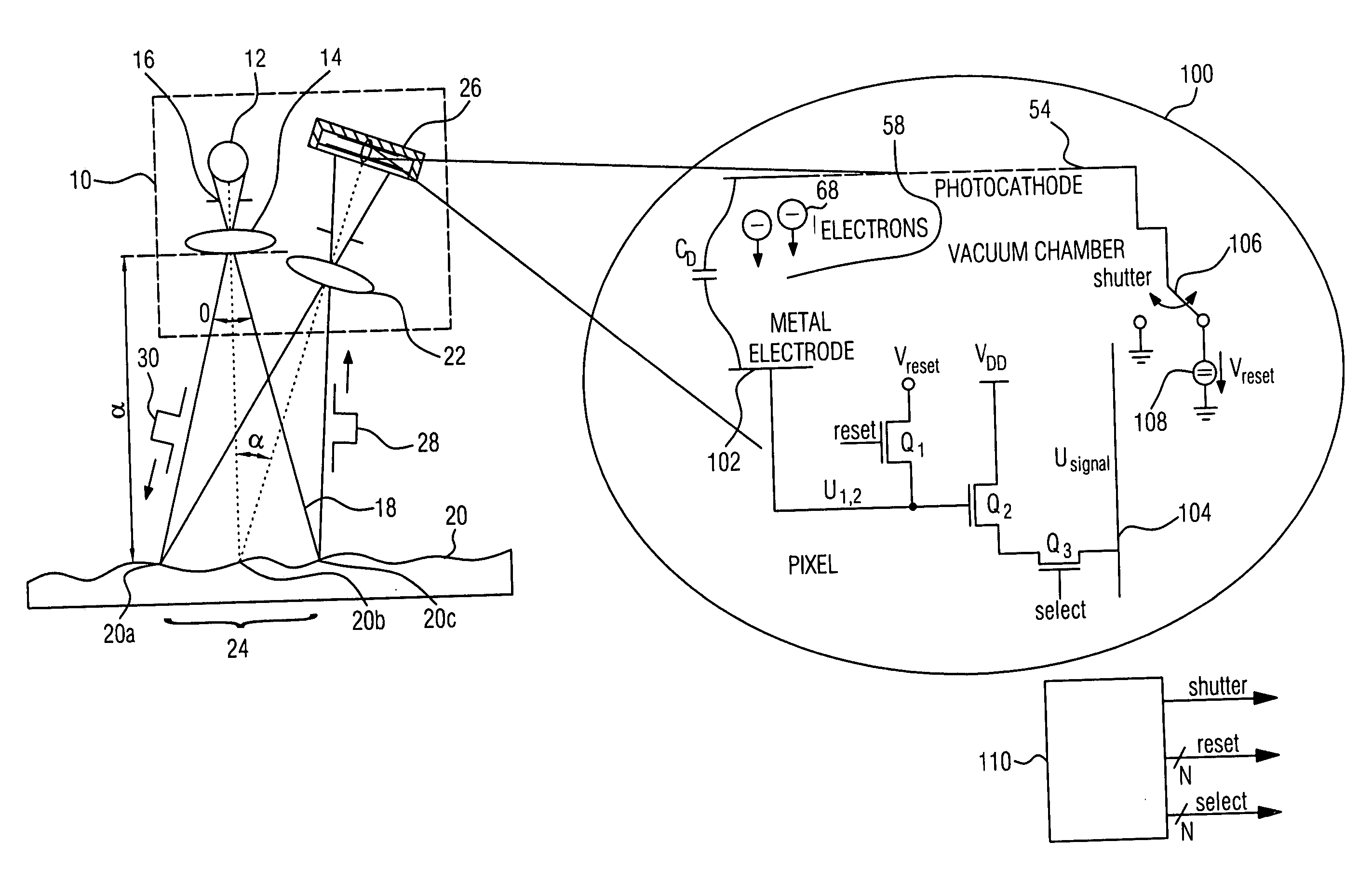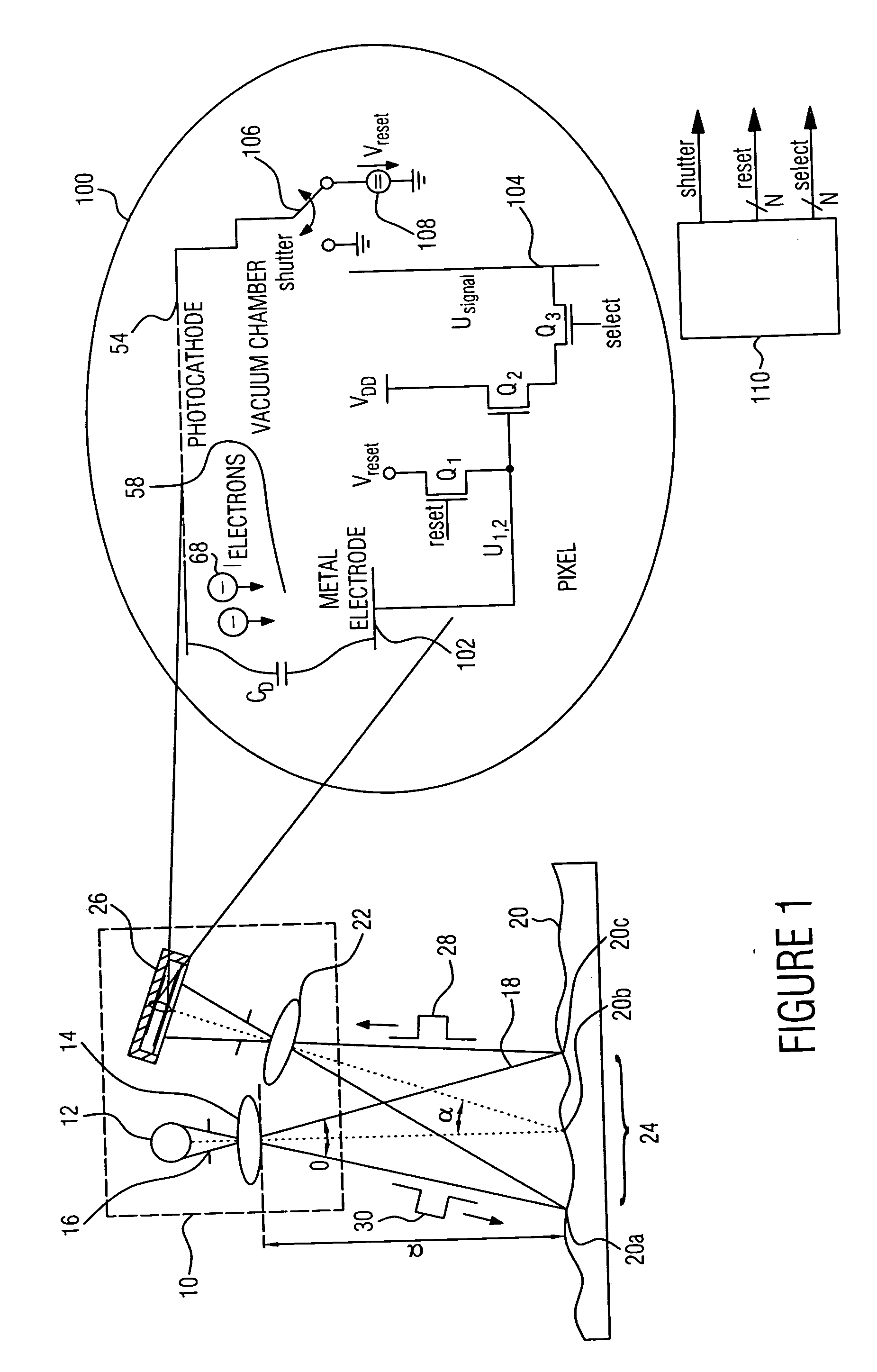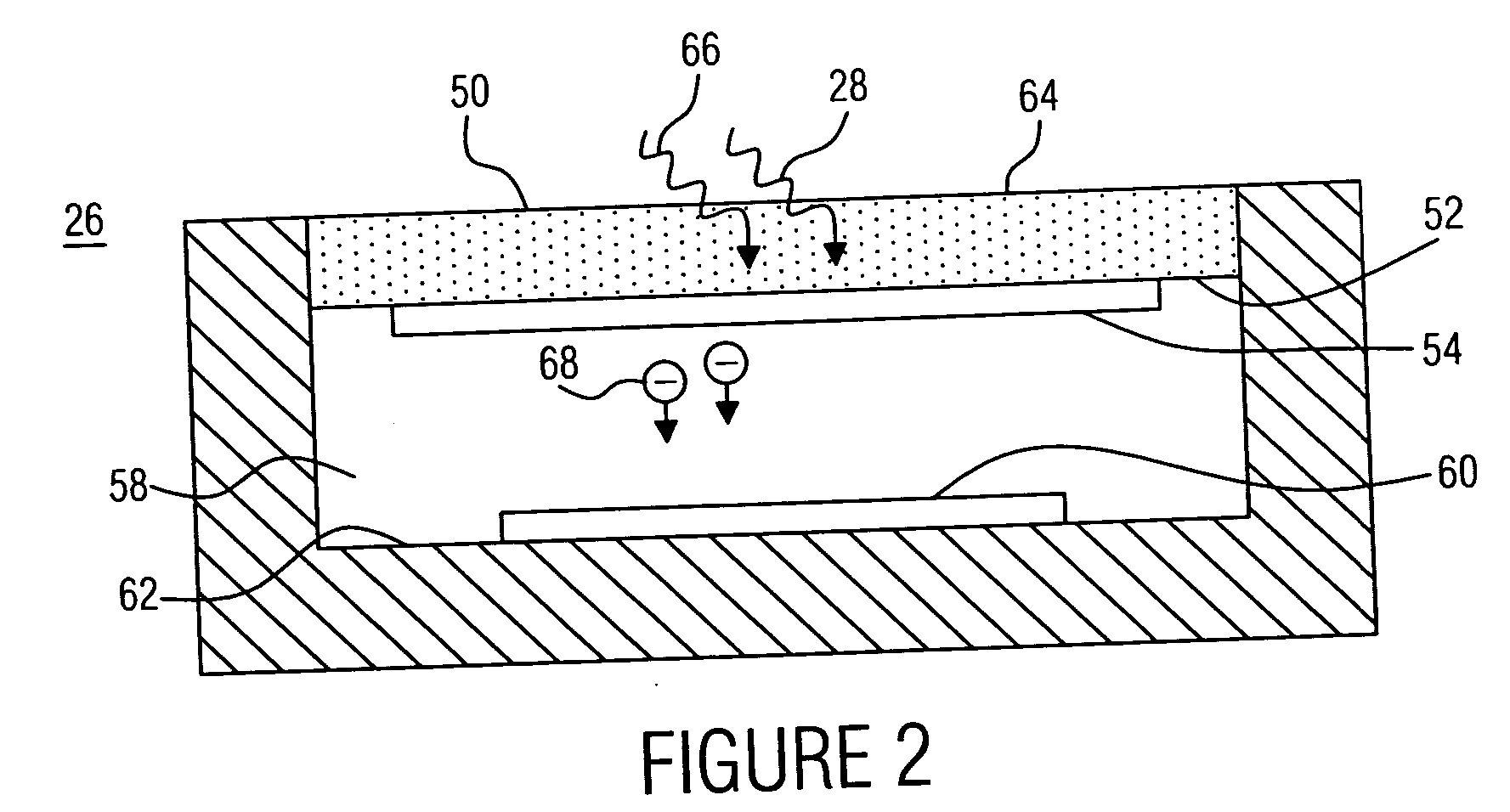Distance sensor and method for detecting a distance
a distance sensor and distance detection technology, applied in the field of distance measurements, can solve the problems of limiting the bandwidth of the system, unable to operate with sufficient reliability in all fields of application, and deviations from the theory, so as to achieve the effect of increasing reliability and/or precision
- Summary
- Abstract
- Description
- Claims
- Application Information
AI Technical Summary
Benefits of technology
Problems solved by technology
Method used
Image
Examples
Embodiment Construction
[0040] With regard to the subsequent description, it is pointed out that same elements or elements corresponding to one another are provided with same or similar reference numerals in the figures and that a repeated description is omitted.
[0041]FIG. 1 shows a 3D distance sensor according to an embodiment of the present invention. The 3D distance sensor is generally indicated by 10. The distance sensor includes a radiation source 12 for electromagnetic radiation, irradiation optics 14 for expanding a beam 16 from the radiation source 12 to become an expanded light bundle 18 onto an object 20, receiving optics 22 for imaging the region 24 of the object 20 irradiated by the radiation source 16 onto a light-sensitive detection plane of pixel detection means 26 also included in the distance sensor 10.
[0042] The radiation source 12 could be any radiation source, such as, for example, an LED or a laser. To simplify the illustration, it will be assumed that the radiation source 12 is a la...
PUM
 Login to View More
Login to View More Abstract
Description
Claims
Application Information
 Login to View More
Login to View More - R&D
- Intellectual Property
- Life Sciences
- Materials
- Tech Scout
- Unparalleled Data Quality
- Higher Quality Content
- 60% Fewer Hallucinations
Browse by: Latest US Patents, China's latest patents, Technical Efficacy Thesaurus, Application Domain, Technology Topic, Popular Technical Reports.
© 2025 PatSnap. All rights reserved.Legal|Privacy policy|Modern Slavery Act Transparency Statement|Sitemap|About US| Contact US: help@patsnap.com



